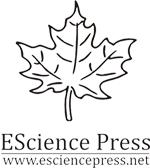A Precise Review: Cancer Diagnosis, Detection, and Treatment in Light of Informatics
DOI:
https://doi.org/10.53576/bashir.004.01.0122Keywords:
Radiotherapy, Nanotechnology, Artificial Neural Network, OMICS technologies, Precision medicineAbstract
Background: Cancer, recognized as one of the most lethal diseases of the 21st century, poses a grave threat to human lives. Scientists are persistently engaged in a quest to find effective treatments for this disease. Cancer informatics offers a fresh perspective by focusing on the comprehensive and efficient acquisition, storage, and utilization of cancer-related information. It aims to enhance our understanding and management of cancer by optimizing the processes involved in accessing and analyzing cancer data. Aim: We explore technological advancements that leverage the potential of cancer informatics to achieve rapid diagnosis and successful treatment of these life-threatening illnesses. Specifically, we delve into the utilization of artificial neural networking, which employs statistical, probabilistic, and optimization techniques to enable machines to learn from past instances. This enables them to identify intricate trends that may be challenging to discern within extensive, chaotic, or complex datasets. Bioinformatics: OMICS technologies exhibit high-throughput interfaces that enable the comprehensive exploration of the genome, epigenome, transcriptome, proteome, and metabolome in an unbiased manner on a global scale. Furthermore, we examined the concept of Precision medicine (PM), which disruptively takes into account both individual variations and population characteristics to deliver customized treatment approaches. Additionally, Nanotechnology holds tremendous promise in transforming medicine to become more personalized, predictive, and preemptive. Lastly, Radiotherapy (RT) plays a crucial role in cancer care, benefiting approximately 50% of all patients, and is an indispensable component of their treatment plans. Conclusion: While we delve into these modern techniques, it is important to acknowledge that every technology has its limitations, which we have also addressed in this review. However, amidst these limitations, we have explored the specific types of cancer for which each technique holds the most promise and benefits. This discussion offers a silver lining by highlighting the potential areas where these techniques can be particularly advantageous.





